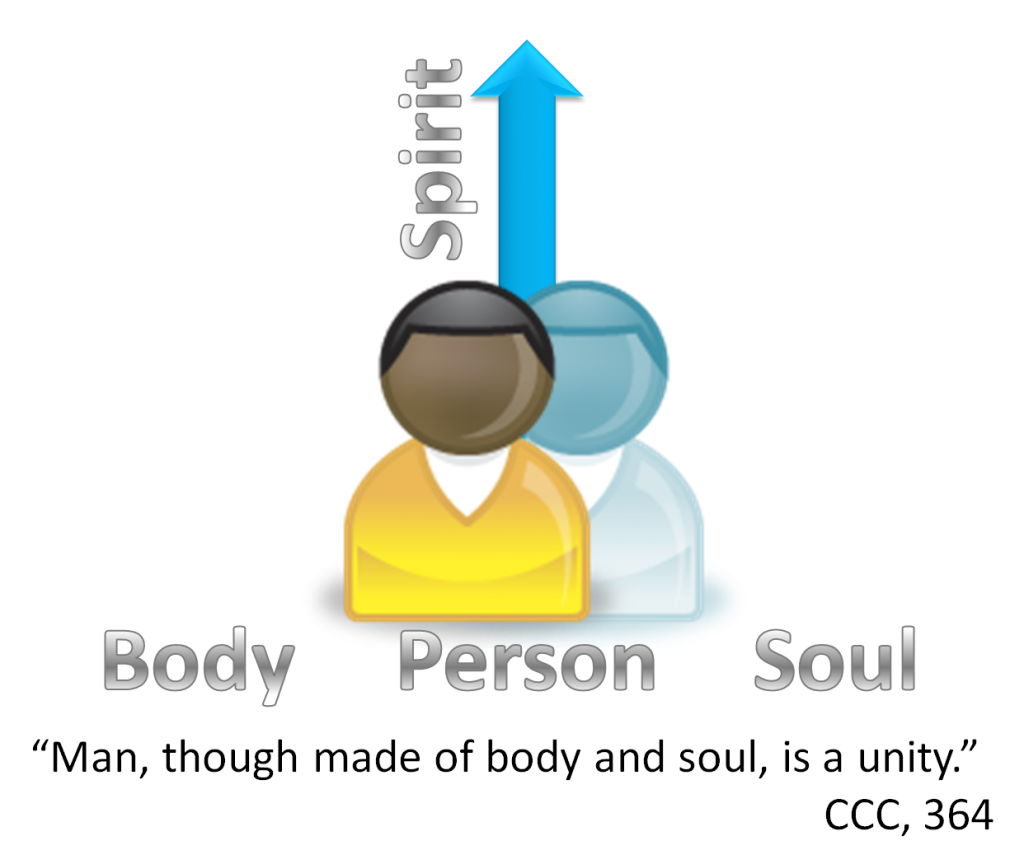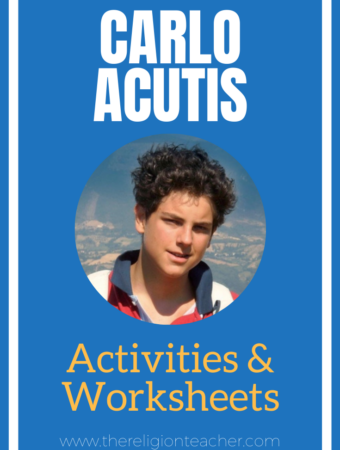The lesson below, taken from The Religion Teacher’s New Roman Missal Student Activity Pack, addresses one of the most striking changes to the new Roman Missal: And with your spirit. The Church community responds to the bishop, priest, or deacon with these words at multiple times during the Mass. What does it mean? How is the spirit different from the body and the soul?
Objective:
- Students will be able to differentiate between body, soul, and spirit.
Assessment:
- Comparison Chart
Learning Activities:
1. Bell Work: Have students complete the Greeting, Preface Dialogue, Sign of Peace, and Concluding Rites worksheet from The Religion Teacher’s New Roman Missal Student Activity Pack.
2. Individual Activity: Have the students fill out a Venn Diagram to show the similarities and differences between the body and the soul based on what they already know. Review their work and have them add to the diagram based on the class discussion and video that follows.
3. Class Discussion: Discuss the following questions to get an idea of what students already know about the body, soul, and spirit:
- How are the body and the soul different?
- What happens to the body and soul after we die? (The soul experiences a particular judgment leading one to purgatory, heaven, or hell. At the Last Judgment, the body and soul will be reunited.)
- When does the Bible mention “spirit”? (Creation in Genesis, Prophetic books, Jesus Baptism, Last Supper, Pentecost, Paul’s letters)
- How is our spirit different from our soul?
4. Video Presentation: Watch the video, The Meaning of “And With Your Spirit” in the New Roman Missal. Have the students complete the Video Graphic Organizer: And With Your Spirit.
5. Journal Writing: If our spirit orients us toward good and toward God, how does the spirit affect the way we act? Have the students journal about times when they acted in such a way that they were led to God.
6. Assessment: Give students the Body Soul and Spirit Comparison Chart from The Religion Teacher’s New Roman Missal Student Activity Pack. Have the students complete it and return it to you for feedback and corrections. (Teachers: here is the answer key with suggested responses.)




Jared, God bless you! I am a new Confirmation teacher and cannot tell you how much I appreciate your resource!! I’ve forwarded to our RE director to send out to all our teachers. I look forward to the New Roman Missal lesson pack! Thanks!!
Thank you for spreading the word, Debra! I’m glad you find these resources helpful for your Confirmation candidates.
I hope you continue doing more of these fantastic lessons for older students. These are so creative and the students learn so much!!! 🙂
While a good lesson in christian anthropology and the last things, I could not, in good conscience, use it in the context of the new *translation* of the Roman Missal (note, it’s NOT a new Missal). “And with your spirit” is a response that goes back to the earliest days of the Church and, in fact, Jewish liturgical practice, and is an affirmation of the *Holy Spirit* working through the *priest* (or deacon) as he performs his unique liturgical function.
The best explanation I have read so far is from the blog of the Archdiocese of Washington (D.C.).:
http:// blog.adw.org/2010/05/and-with-your-spirit-its-not-what-you-think/
“The priest or bishop who celebrates Mass is configured to Christ by the Sacrament of Holy Orders. The Spirit of Christ is in him in a unique way that is unlike any other non-ordained member of the congregation. The priest acts in persona Christi. That is, Christ personally ministers through him in such a way that we say that Christ is the true priest and celebrant of every Mass. The phrase “and with your spirit is an acknowledgment and statement of faith in this fact. The congregation says in effect, “We acknowledge the Spirit, presence and grace of Christ in your spirit father.”
With vocations shrinking, let’s not sell Holy Orders short in our catechesis, please!
David,
Thanks so much for offering your thoughts and the great link. I think the Church’s teachings about in Persona Christi is certainly applicable here and I’m glad you pointed it out. I think this concepts deserves a lesson plan all to itself! My primary hope in this lesson plan is to ensure that young people do not think that only the soul is important during Mass and not the body. This dichotomy is so easy to fall into these days and the phrase “and with your spirit” can be misleading if not properly understood.
I would like to know if there is a charge for the lesson planning and activities and associated activities?
Thank yoy ,
M Doherty
Hi Mary! There is only a charge for the lesson plans and activities within the products for sale at The Religion Teacher store: https://www.thereligionteacher.com/products/
Thank you so much for sharing!
I am a confirmation teacher and your insight has been of great help in my prep notes for my class.
God Bless you
Catia from SA